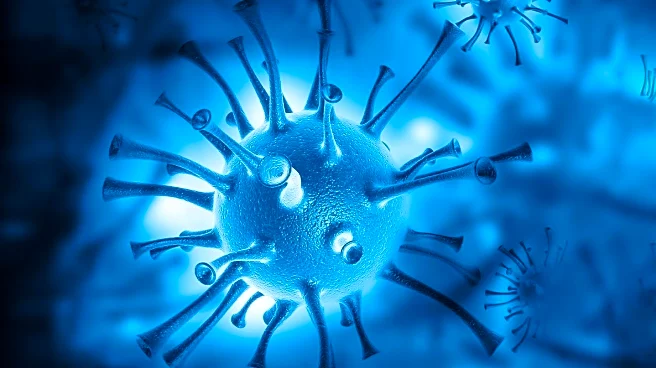What's Happening?
The World Health Organisation (WHO) has identified a new Covid variant, BA.3.2, as a 'variant of interest' due to its potential to evade antibodies. This variant has been detected in Europe and is being closely monitored by the WHO. The BA.3.2 strain, which includes subvariants BA.3.2 (A) and BA.3.2 (B), may enter cells less efficiently than its predecessor, BA.3, but shows a higher efficiency in evading neutralizing antibodies. This characteristic raises concerns about its spread among vaccinated populations. The UK Health Security Agency has noted that the variant could pose a higher transmission risk, especially during the winter months when infections are expected to rise. The WHO is gathering data to assist vaccine producers in addressing these new mutations.
Why It's Important?
The emergence of the BA.3.2 variant underscores the ongoing challenges in managing Covid-19, particularly in maintaining vaccine efficacy. The ability of this variant to evade antibodies could lead to increased transmission rates, even among vaccinated individuals, potentially complicating public health efforts to control the virus. This development is significant for vaccine manufacturers, who may need to adjust formulations to maintain protection levels. Additionally, public health agencies may need to reinforce preventive measures, such as mask-wearing and social distancing, to mitigate the spread. The situation highlights the importance of continuous genomic surveillance and rapid response strategies to address evolving viral threats.
What's Next?
The WHO and health agencies worldwide will continue to monitor the BA.3.2 variant closely. Vaccine producers may need to consider updates to existing vaccines to counteract the variant's antibody evasion capabilities. Public health advisories may be updated to reflect new preventive measures, especially as the winter season approaches. The UK Health Security Agency has already issued guidance on managing respiratory infections, emphasizing the importance of vaccination and protective measures. As more data becomes available, health authorities will assess the need for additional interventions to protect vulnerable populations and prevent widespread transmission.










